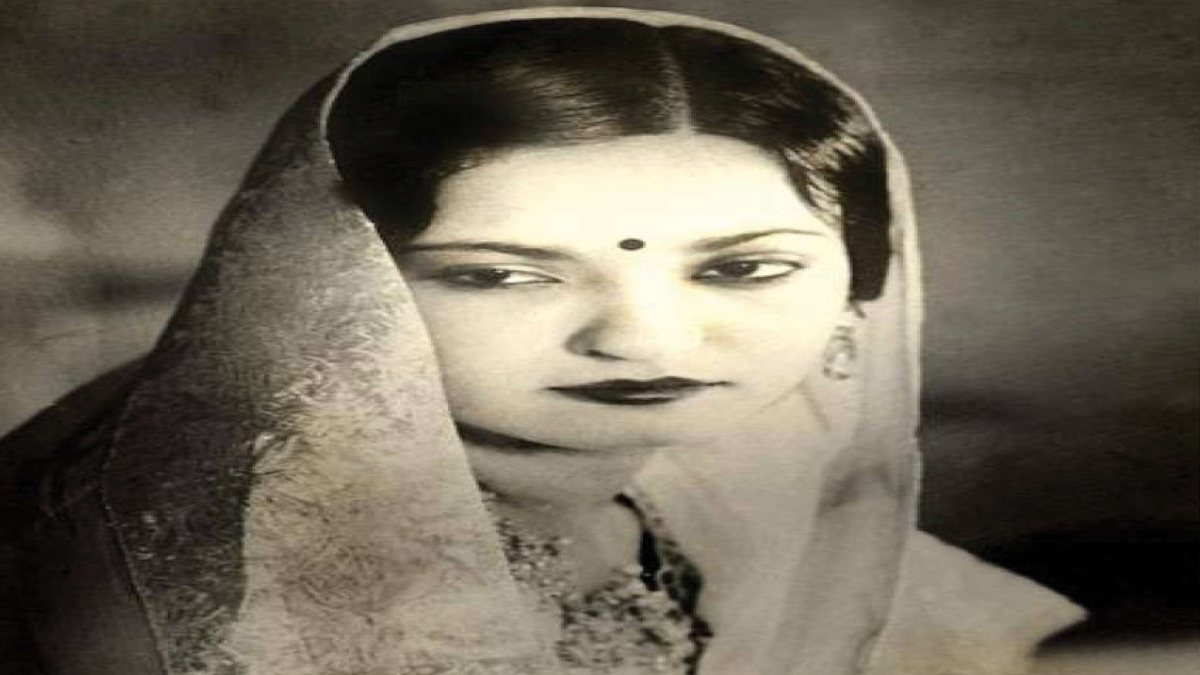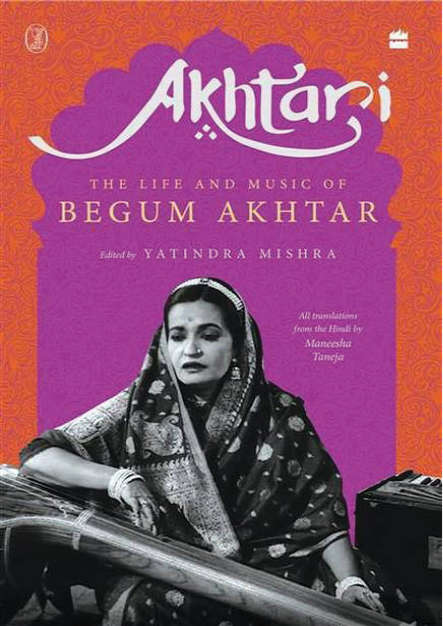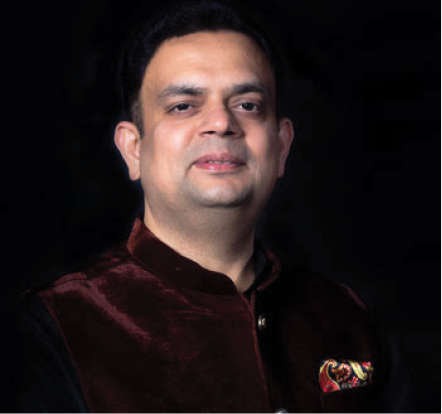
A celebrated Hindi Poet, Music and Cinema Scholar and also the prince of Ayodhya, Yatindra Mishra has four collections of poetry to his credit —Yada-Kada, Ayodhya Tatha Anya Kavitayein, Dyorhi Par Aalaap, and Vibhas. He has several well-received books on Indian Classical Music and cinema including Girija (Based on Thumri Singer Girija Devi), Devpriya (Dialogue with danseuse Sonal Mansingh), Sur Ki Baradari (Life & Times of Shehnai Maestro Bismillah Khan) and Akhtari: Soz Aur Saaz Ka Afsana (Based on Thumri and Ghazal Queen Begum Akhtar). He is the editor of a cultural gazetteer of Faizabad titled Shahernama Faizabad. His book Lata: Sur-Gatha (Musical Journey of legendary playback singer Lata Mangeshkar) won seven awards. He is currently working on a book on eminent lyricist, poet, and filmmaker Gulzar Saheb. An understated cultural aficionado, his works are linked to his inherited legacy in the richest, most seamless manner. Yatindra spoke to The Daily Guardian about the English translation of his book Akhtari the Life and Music of Begum Akhtar based on the life, times, and music of Akhtari Bai Faizabadi and more.



EXCERPTS:
Q. Can you share the famed legacy of music in Ayodhya?
A. My city Ayodhya is a Vaishnav city where there is a tradition of Madhuropasana or Ram Rasik Bhakti Tradition. Here the deity is revered by the devotee through music channelised by love and devotion. The pioneer of this tradition was the ancient saint Sant Kripa Niwas.
Ayodhya is a complex blend of Ram bhakti, Nirguna Upasana, folk culture of Awadh, and snippets of musical heritage from the Ram Bhakti traditions of the South. It is visible in the path of Alwandar Strota where Shri and Narayan are worshipped. The city boasts of Ramleela Performances in fields (Maidani Ramleela) that bear the traces of Parsi theatre along with Ram Katha Gayan. Ram Katha Gayan is a major part of the theatrical musical legacy of the land. The winds carry hymns sung in temples all over the city, composed on a common beat and rhythm pattern following in the tradition of Saam Gaan from the Saam Veda. Saam Veda is the Veda is among the four holy books that deal with music. Over time, the city has also been touched with modernity and musical instruments like harmonium, tabla, dholak, manjeera and the live musicians have been replaced with records and tapes. It is common to hear Mukesh’s Ramcharitmanas, Hanuman Chalisa by Anoop Jalota and Hari Om Sharan being played in the temples.
There have been many famed personalities who have graced the musical landscape of Ayodhya. Begum Akhtar, Swami Pagaldas, and a disciple of the renowned Mridangacharya Swami Bhagwan Das are noteworthy. Pandit Rasik Vihari Mishra ‘Kallu Maharaj’ and Bhagwat Kishor ‘Vyakul’ were great artists dedicated to their craft who did not get the fame they deserved. Pandit Dayashankar Mishra pioneered a rendition in bhajan and khayal gayaki and established a new Gharana.
My lovely grandmother Late Rajkumari Vimla Devi introduced me to the nuances of music. She was a trained semi-classical and folk singer and whose art remained unrecognised. She was trained under the tutelage of Pandit Ram Padarath Ji and also received training from Akhtar. Bhajans sang in her voice along with traditional folk songs in authentic Awadhi dialect like sohar, nakta, banna, and hori make up my fond memories. Ayodhya has a current of melancholy which is perceptible in the lilting Ramdhun that resonates in the city.
Q. Your book Akhtari relives the era of Begum Akhtar’s residency in Ayodhya. Explain the legacy?
A. The period from 1935 to 1945 was when Akhtar was making appearances in darbar and holding Khadi Mehfils (singing, dancing, and performing while standing). She performed in Ayodhya Darbar especially on Dussehra and Holi. This fact is further established by the works of historian Salim Kidwai that this was the time when she was holding Khadi Mehfils mainly in the Awadh Province. She mesmerised the elites and the common man alike with her aura as a diva. A white Mercedez Benz from Ayodhya Raj, under the then king Maharaja Jagdambika Pratap Narayan Singh, went to fetch her, bearing the number plate Ayodhya-126. By all records, it was her favourite and special attention was paid that this car remained in her attendance. Her visits and performances made up for interesting anecdotes that have been passed down to us from generations. Talking to my elders, I came to know that there was a fight amongst drivers as to who would go to receive her. Apart from her stardom, it was also because of her magnanimity as the driver in attendance got lavish tips, inams, and ikrams.
She sang a multitude of songs including sadra, mubarakbadi, thumri, kajri ghazal, holi and phaag ki thumri. My grandma mentioned her rendition of thumri Chala ho pardesiya naina lagaye, and Holi ki thumri Daff kahe ko bajaye main toh aawat rahi were something magical. She was fortunate enough to learn these from the great doyen. At that time, Akhtar graced the Royal Darbars of Kashmir, Reewa, Baroda, Darbhanga, and Rampur. The era dictated that the singer performing in the Baroda Darbar of Maharaj Sayajirao Rao Gaekwad III was listed as an A grade artist. It was a stamp of endorsement for any Bai ji or classical singer and in those times Akhtar was a prominent presence there. In these circumstances, it was an honour for Ayodhya that it hosted and revelled in her art.
Q. Which is your favourite composition from her repertoire?
A. Picking a favourite amongst her songs is akin to say that Hazaron khwahishein aisi ki har khwahish par dum nikale. Each song, composition, and rendition pierces my heart in a new way. But if I have to pick a favourite I would go with Koyaliya mat kar pukaar, Nihure-nihure buhare, Jabse shaam sidhare, Kaun tarah se tum khelat holi, and Mori bali si umariya gaune ki aayi ratiya. Kaifi Azmi’s Aisa to zindagi mein kisi ki khalal pade, Sudarshan Fakir’s Kuchh toh duniya ki Inayaat ne dil tod diya, and Ahmad Jalili’s Ab chhalakate hue sagar nhin dekhe jate are perennial favourites in ghazal. The list will go on as the magic of the Akhtar unravels.
Q. What does music mean to you?
A. As a writer and poet, music is something inexplicable. It would be better if I said that what is inexplicable can only be explained through music. It touches on nuances, sentiments and meaning of the human life which were hitherto untouched. It calls out for something divine, the pukaar elevates the human experience. For me, music is suspended between being a solace and being sublime. I believe that if God exists, He can only be reached through music. It is not without reason that the last step of Navdha Bhakti culminates in musical offerings to God.
Q. How do you see the famed Ganga Jamuni culture of Avadh thriving in Ayodhya?
A. These are not just the cultural ethos of Ayodhya but the whole of India. The tradition of Nauha singing on Muharram is carried on with the same reverence and sanctity that is given to any other holy practice, Kabir the weaver is sung by Pandit Bhimsen Joshi and Meerabai’s padas by Ustad Faiyyaz Khan. I was captivated by Ustad Bismillah Khan’s spirit for his practice of playing sehra for Baba Vishwanath. Ayodhya is a living, breathing specimen of the same ethos. Muslims make up a major part of the Ram Leela performances in Mumtaz Nagar, a part of Ayodhya. We find soulful music emanating from the dargah of Hazrat Sheesh Paigambar and Argada Masjid in Ayodhya. Music talks of the shared divine, the shared bliss of harmony and melody. Various sects and regions too find their presence in Ayodhya with temples like Kale Raam Mandir. They carry on their respective musical and artistic traditions.
Q. Did you relive a fine moment while penning the book on Lataji?
A. It was a journey in all sense. I understood that however cliché it must be, the journey is more rewarding than the destination. There were countless moments, some moments of pure awe where I stood star-struck, that I am talking to a legend who defined generations. I find myself extremely fortunate that in the process of writing this book I embarked on a journey to understand the musical and cultural topography of the Indian subcontinent. This quest to understand the music of the Indian diaspora has been incredibly enriching.
Q. Who are your favourite voices from Avadh? Share the legacy of words and verses of Avadh.
A. The most endearing ones are Arjoo Lakhnvi, Majaz Lakhnavi, Meer Anis — the king of Mersia and Khwaja Haider, Ali ‘Aatish’ Pandit Brijnarayn ‘Chakbast’ and Mohd. Rafi Sauda. The pioneers who have lifted Hindi poetry on their shoulders are Kunwar Narain, Raghuveer Sahay, Jaishankar Prasad, and Mahadevi Verma. Some eminent lyricists who always win over my heart are Shakeel Badayuni, Jaan Nisar Akhtar, Majrooh Sultanpuri, and Kaifi Azmi.
Q. What are your views on the he fable of the Ayodhya Princess travelling to Korea and the link enjoyed between the two families?
A. Around two decades ago historians from Korea visited my home Rajsadan to meet my father Bimlendra Mohan Pratap Mishra. They had documents and historical and archaeological proofs stating that the clan mother of the Garak Clan was the princess of Ayodhya. Around 2,000 years ago, the king of Ayodhya had a dream that if he set his daughter to sail in a particular direction, it would result in her fortune. So he did as the divination dictated and Princess Suriratna set sail. At the same time, the King Kim Suro of Korea got a dream that to seek his fortune he should go in the direction in which the Princess was sailing. And on the consultation of his royal astrologers, he revered Princess Suriratna as an auspicious blessing and the two of them were married in a holy union. Thus she came to be known as Queen Huh. They had 10 sons, eight of whom became bhikkhus (Buddhist monks), one founded Japan, and one founded Korea.
The Koreans pay homage to their Clan Mother, wherein the Garak Clan is the largest clan of Korea and has given the nation many leaders and visionaries. It was my father who pioneered the relation between Ayodhya and Korea. He went to great lengths to seal and honour the relationship at personal cost and effort.
The Korean delegation comes every year for the past 20 years where they are hosted by the Royal Family of Ayodhya at their residence. There is an exchange of two cultures and their respective arts. It is a beautiful ceremony that could sustain itself because of my father’s efforts.